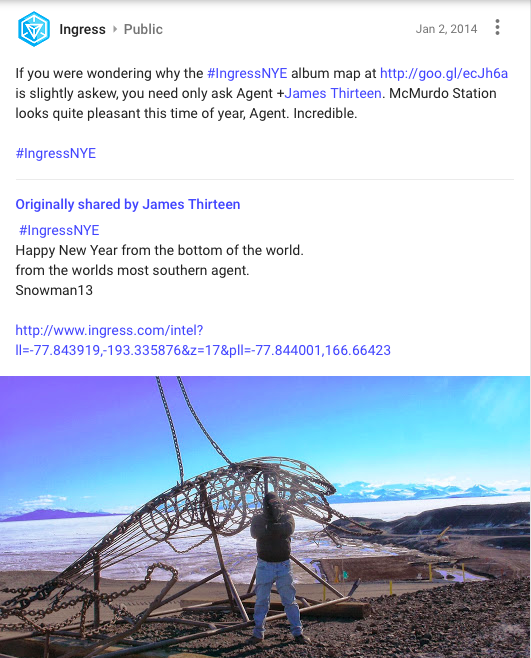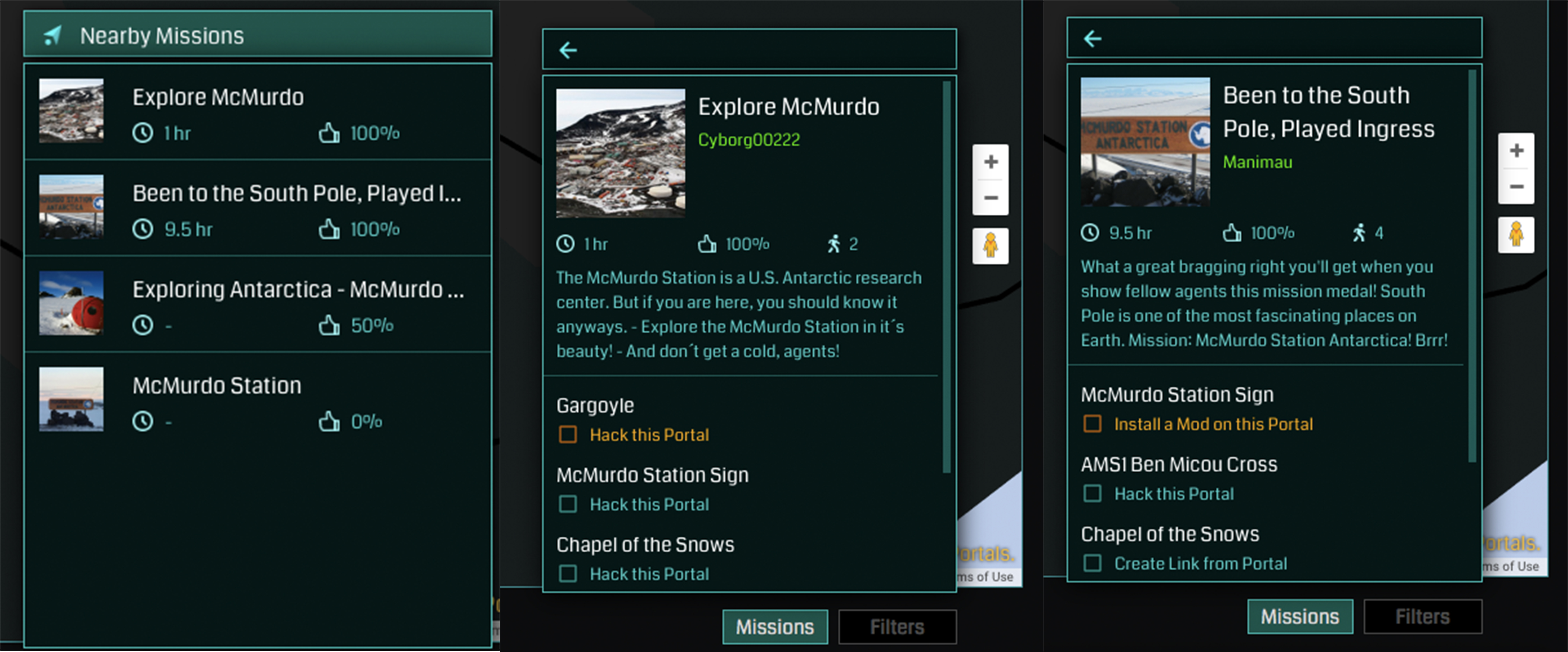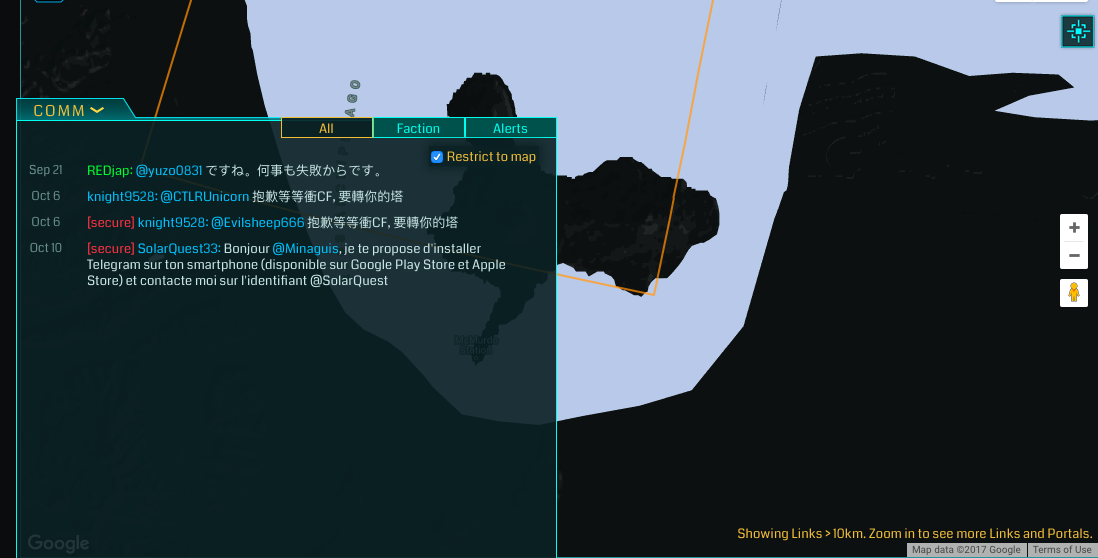Inside Antarctica’s Illicit Gaming Scene
Credit to Author: Caroline Haskins| Date: Thu, 26 Oct 2017 13:00:00 +0000
This story is part of OUTER LIMITS, a Motherboard series about people, technology, and going outside. Let us be your guide.
The top post on the subreddit r/Antarctica on July 12 was an ambiguous statement of intent.
“Trying to get in contact with someone at McMurdo Station for a project,” a user, DarthMewtwo, wrote.
The request caught the attention of someone who identified as an IT worker at McMurdo, the largest manmade community on Earth’s frozen, southernmost continent, and one of three American Antarctic research outposts.
“I might be able to help depending on what you need/how lazy I am,” another user, CainsCurse, replied.
DarthMewtwo responded by explaining that he lives in Seattle and plays the augmented-reality mobile game Ingress with his mom, who lives in Newcastle, Australia.
Ingress is location-based and was released in 2013 by Niantic, the developer of Pokémon Go. Players are called “Agents,” and they can join either the “Enlightened team” or “Resistance team” and earn “Action Points” by walking around and acquiring virtual items, such as “Exotic Matter.” Millions of people around the world play the game.
“The point of the game is to create virtual triangles, or fields, between real locations to capture them for your team,” DarthMewtwo added in the post.
Cainscurse told DarthMewtwo that there’s one big problem: cell phones aren’t allowed on McMurdo’s broadband network. When DarthMewtwo claimed to not know this was the case, their conversation on r/Antarctica came to an abrupt end.

I sent DarthMewtwo a private message and asked why he wanted to get in touch with someone in Antarctica. DarthMewtwo, who identified himself as “Zach,” said that it all comes down to the central strategy of Ingress.
Ingress is really driven by “portals,” which players can conquer for their teams by “hacking” and then forming triangular “links” with other portals hacked by teammates in their regions, or around the world. Linking portals provides an advantage to Ingress teams. But preventing the other team from “hacking” a linked portal can be difficult in densely-populated areas with many Ingress players. In other words, there’s a strategic advantage in linking to portals in remote areas, which are less likely to be hacked.
This goes without saying, but there aren’t many places more remote than Antarctica. That’s what makes the continent so appealing to “avid” Ingress players like Zach and his mom. Zach explained that the next time he goes to visit her, he could try to link with portals at the very bottom of the Earth.
*
Thomas Scott, an Ingress player from Christchurch, New Zealand, who was involved in a 2015 operation that formed portal links between New Zealand and Antarctica, told me via Facebook Messenger about the appeal of portals in remote locations.
“Strategically, they’re so that the response from the other team takes longer,” he said. “Antarctica portals are also appealing because there is very little to block linking to them from New Zealand or Southern Australia.”
Antarctica portals are particularly difficult to form because as CainsCurse noted, cell phones aren’t allowed on McMurdo’s broadband network. And because Antarctica doesn’t have cell towers, anyone employed through the National Science Foundation US Antarctic Program needs to sign an Information System Rules of Behavior agreement in order to have internet access.
Per the NSF rules, personal internet use is only allowed if it doesn’t slow down official work activities. You can’t bring a personal Wi-Fi router to the station, and you also can’t mess with the station bandwidth in any way.
“Unless explicitly authorized, individuals do not have permission to disrupt any information system or network infrastructure,” the NSF rules read. “Individuals found to be in violation of this prohibition may be subject to appropriate administrative sanctions, civil liability or criminal prosecution.”
That apparently hasn’t stopped some Ingress players from asking civil servants to play the game.
“I’ve never actually done anything with Antarctica before—it’s just kind of common knowledge that there have been a couple [players] at McMurdo in the past,” Zach told me in a private message. “I’ve been trying to reach out through my global contacts, and obviously been finding nothing. Next I’m going to try talking to people I can track down who have been there in the past.”
Zach cited “James Thirteen” (or “Snowman13”) as a trailblazer in the Ingress community for hacking and linking Antarctic portals for the Resistance team. In a February 2015 Google Plus post titled “Operation Antarctica—Final Situation Report,” James Thirteen describes collaboration with other Ingress players in Antarctica to create, hack, and link portals at McMurdo to locations around the world.
“Even though policy says you can’t connect cell phones and tablets to the Wi-Fi, people do”
Niantic creates portals in highly-populated areas. But it relies on Ingress players submitting portals for less-populated areas, such as Antarctic research stations, which Niantic then approves or denies. Niantic requires players to take photos of their portal submission and rejects any submissions with third-party photos. Basically, Niantic doesn’t want players submitting portals for places they’ve never been. This means that in theory, a portal should indicate an Ingress player has physically been to its location.
James Thirteen submitted some portals in Antarctica, which were accepted. Other portals were approved and active before he arrived.
While it seems possible to work around Niantic’s rules for third-party images and portal submission, James Thirteen’s Google Plus page is filled with pictures of Antarctica with no online precedent and scattered with details about his employment. In December 2013, James Thirteen wrote that he travels to Antarctica regularly. In posts from 2015 (when he wrote the “Operation Antarctica” report) and 2016, he indicated that he works seasonally in the station’s harbor.
Most McMurdo employees are employed through private hiring agencies, but since the NSF manages the station, everyone is subject to NSF rules. In “Operation Antarctica,” James Thirteen described creating a Wi-Fi hotspot in order to gain access to portals in the area while stationed at McMurdo—a clear violation of NSF rules. However, many scientists at McMurdo evidently didn’t even know what Ingress was at the time, according to James Thirteen.
“When we brought the topic of Ingress up, even as a game, most often we were met with blank stares,” he wrote.
Other Ingress players took advantage of James Thirteen’s efforts and were able to form portal links that connected Antarctica with New Zealand. In an April 2015 post on Google Plus, Christchurch’s Scott described forming a 2,360-kilometer wide portal link, which he claimed involved dozens of Ingress players from various countries.
According to Peter West, a spokesperson for the NSF’s US Antarctic program, personal use of the McMurdo bandwidth network is limited for a reason.
“One of the primary reasons for telecommunications between Antarctica and other parts of the world from US stations is the transmission of scientific data, as well as communications to keep the stations running properly,” West told me in an email. “There is some bandwidth available for personal email and the like for people in Antarctica, but personal use is not the primary reason the IT system exists.”
A current McMurdo employee said that he personally hasn’t seen people playing Ingress around McMurdo.
“Even though policy says you can’t connect cell phones and tablets to the Wi-Fi, people do,” said the employee, who requested anonymity because speaking to a reporter could put his job in jeopardy. “It’s just not really a group of people that seem like they would be into a lot of that [ Ingress] stuff. Most of us don’t carry our cell phones with us.”

Niantic’s Ingress Google Plus page, an active community where players talk about the game, has openly supported players in their efforts to play Ingress around the world, including Antarctica. Ingress players can link their player profiles to Google Plus, making Google Plus a de facto off-game user community for Ingress players. (Niantic originally formed in 2010 as an internal Google startup.)
I reached out to Andrew Krug, the Global Community Manager at Niantic, and asked if the company is aware of the severe limitations to personal Wi-Fi use in Antarctica. Krug gave his answer in a Word document, which was emailed to me by Yafine Lee, who is an employee for Fortyseven Communications, Niantic’s contractor for public relations.
“Niantic does expect all Ingress players to comply with and abide by applicable laws and regulations, as expressed in our Terms of Service,” Krug wrote. “We also offer the opportunity to report any question or concern around inappropriate behavior directly to our support team through a dedicated page on our online support center.”
When I corresponded with Krug back in August, he told me that while seventeen portals exist in McMurdo, only three were captured by a team. Players have to capture a portal at its location, but portals can remain captured by a team by “charging” it from as far as 2,500 miles away. New Zealand is only 850 miles from McMurdo, so it is entirely possible that no Ingress players were at McMurdo back in August.
*
Over the past few days, I’ve tried to find any recent plans to form portal links with McMurdo station. To do this, I used the Ingress Intel Map and opened the “Missions” tab, which shows tasks Ingress players can complete when they’re in a particular area. When I focused the map on McMurdo station, the missions tab displayed four possible Antarctic missions.
Two of these tasks have been completed in the past day by two and four players, respectively. This means that there are four to six Ingress players at McMurdo station as of today—October 25.

Three screenshots from the Ingress Intel Map’s “Mission” tab, captured on October 25. The tab shows available tasks to complete in Antarctica, including two tasks that have been completed in the past day among four to six players.
I also used the Intel Map’s “Comm” feature, the primary way players first get in touch with people in other locations, and restricted it to McMurdo station.
Around McMurdo, the “Comm” has activity as recently as October 22. This could suggest players are trying to form a new intercontinental link with McMurdo.

I reached out to user @SolarQuest33 on Telegram, a popular chat app among Ingress players, with the username posted in the “Comm.” The user told me that he’s never been to McMurdo, but he’s spoken with two users who have. One of these users is James Thirteen.
“To my knowledge, there is nothing planned [for linking portals],” the user said. “The [ Ingress] community is very small there [in McMurdo].”
The user suggested to get in touch with James Thirteen and the other player using the “Comm.” I tried this, but neither player immediately responded.
“I will never give up!”
On the Ingress Google Plus page, the most recent Antarctica-related post was made by Hugo Contreas on August 29. The post shows a portal link between Argentina and King George Island, an Antarctic island and site of a research station operated by the Chilean Antarctic Institute (INACH), whose rules are even stricter than those of the NSF. Per INACH rules, personal internet use is banned at King George Island.
“There is no access to various sites on the Internet, such as Facebook or Youtube, privileging only the mail platforms,” a translated version of the INACH rules states.
Contreas did not immediately respond to a request for comment about the portal link with King George Island.
Meanwhile, portal links to McMurdo station don’t exist anymore. In fact, the most recent successful intercontinental portal link that I could find is from April 2016.
Scott, the Ingress player from New Zealand, thinks the lack of portal links with Antarctica is due to an Ingress crackdown on location spoofing. Players spoof by manipulating their GPS settings so that the Ingress app perceives them at an incorrect location. Scott said New Zealand has a notorious issue with spoofing. As a result, links between the country and Antarctica were targeted by spoofers and taken down.
We don’t know if there’s also been a crackdown by the NSF on people playing Ingress in McMurdo, which would make it more difficult to maintain portal links. Andrew Savy, who worked to create a portal link with Antarctica in 2016, told me via Facebook messenger there is at least one Ingress player who travels “seasonally” to Antarctica. He did not clarify whether this is James Thirteen.
“Spoofing is a problem, and we will confirm as best we can with our agent who works at the Antarctic base if there are any other agents there at the time,” Savy said.
When I last spoke with Zach, he was still determined to find an Antarctic Ingress agent so that he can play with his mom.
“I will never give up!” he said. “Even if there aren’t any portals that work for my plans this season, there may be next year! And I’m over in Australia about once a year, so there’ll be plenty of opportunities!”
Get six of our favorite Motherboard stories every day by signing up for our newsletter.